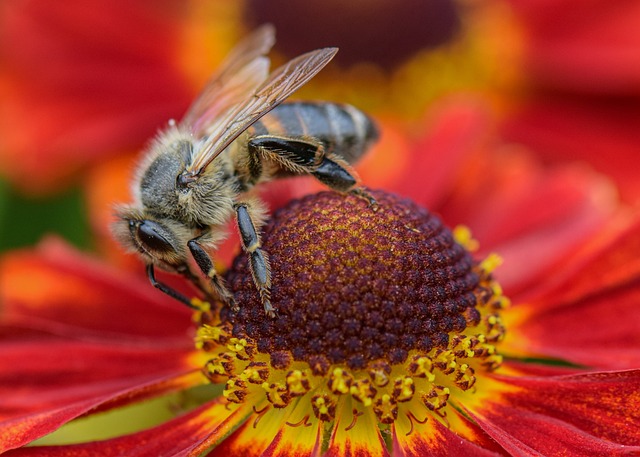Pillbugs thrive in moist, dark environments with organic matter. To prevent them naturally, maintain landscapes by removing decaying plant life, using permeable materials, composting, planting native species, and incorporating physical barriers. Modify soil composition, plant fragrant repellents like garlic and lavender, practice proper lawn care, encourage beneficial insects, use pine needles or diatomaceous earth as barriers, and monitor treatments for long-term success in implementing eco-friendly pillbug solutions.
Pillbugs, also known as armadillos, can transform your lush landscape into a chaotic garden. Understanding their preferred habitats is the first step towards minimizing their presence. This article explores eco-friendly landscaping adjustments that act as effective pillbug deterrents, focusing on natural solutions to create an unwelcoming environment. From plant choices to organic repellents, we provide actionable steps for maintaining your garden without resorting to harmful chemicals. Discover how these simple changes can make your space less inviting for pillbugs and enhance your overall landscape design.
Understanding Pillbugs and Their Preferred Habitat
Pillbugs, also known as wood lice, are small, wingless insects that thrive in moist environments with ample organic matter. They prefer dark, humid spaces where they can feed on decomposing plant material. In landscapes, pillbugs often make their homes under rocks, fallen leaves, and garden debris, or within the cracks of concrete. To minimize pillbug habitats, it’s crucial to implement eco-friendly solutions that disrupt their preferred living conditions.
One effective strategy is proper landscaping maintenance. Regularly removing decaying plant matter, raking up leaves, and trimming back overgrown vegetation reduces hiding spots and food sources for pillbugs. Additionally, using permeable materials for paths and patios minimizes moisture build-up, as pillbugs are drawn to humid environments. Incorporating eco-friendly practices like composting instead of leaving organic debris on the surface can also help deter these insects naturally.
Eco-Friendly Landscaping Choices to Deter Pillbugs
When considering landscaping adjustments to minimize pillbug habitats, eco-friendly practices offer a sustainable approach to deterring these pests. Planting native species is an effective strategy as these plants are adapted to local conditions and often have natural resistance to common garden pests, including pillbugs. Choosing drought-tolerant plants can also reduce the need for frequent watering, which creates less favorable conditions for pillbug breeding.
Additionally, incorporating physical barriers like stone paths, gravel walkways, or wooden chips can help prevent pillbugs from accessing certain areas of your yard. These eco-friendly pillbug solutions not only reduce the presence of these pests but also contribute to a healthier and more diverse garden ecosystem.
Creating an Unwelcoming Environment with Natural Solutions
Creating an unwelcoming environment for pillbugs naturally is an appealing approach for those seeking eco-friendly pillbug solutions. Instead of relying on harsh chemicals, landscaping adjustments can deter these pests effectively. One strategy is to modify the soil composition by adding organic matter such as compost or sand, making it less suitable for pillbug survival and reproduction. Plants with a strong scent, like garlic, lavender, and rosemary, are natural repellents that can be strategically placed around gardens or entry points. These plants not only deter pillbugs but also add aesthetic value to the landscape.
Additionally, maintaining proper lawn care is crucial. Cutting grass regularly and removing dead foliage reduces hiding spots for pillbugs. Encouraging a diverse ecosystem by planting native grasses and wildflowers can attract beneficial insects that feed on pillbugs, creating a natural balance. These organic solutions not only minimize pillbug habitats but also promote a healthier, more sustainable environment.
Maintaining Your Landscape Post-Implementing Changes
After making landscaping adjustments to deter pillbugs, maintaining your garden and outdoor space is crucial for long-term success. Eco-friendly practices play a vital role in managing these pests naturally. Regularly removing debris, leaves, and twigs can eliminate potential hiding spots and reduce moisture levels, making the environment less appealing to pillbugs. Encourage beneficial insects like ladybugs and lacewings, known natural predators of pillbugs, by planting diverse native flowers and shrubs. These insects will help keep pillbug populations in check without resorting to harsh chemicals.
Additionally, consider using physical barriers like fresh pine needles or diatomaceous earth to protect vulnerable areas. Pine needles provide a natural, organic barrier that discourages pillbugs from entering, while diatomaceous earth can be sprinkled around plants to disrupt their protective armor. Regular monitoring and prompt treatment of any infestations will ensure your landscaping adjustments remain effective, fostering an eco-friendly pillbug solution for a healthy, vibrant garden.
By understanding pillbugs and their preferred habitat, we can make informed decisions to create an unwelcoming environment for these pests. Implementing eco-friendly landscaping choices like using natural repellents, choosing suitable plants, and maintaining proper soil conditions is key to deterring pillbugs effectively. Regular maintenance and adjustments to your landscape will ensure these solutions remain effective over time, providing long-lasting protection from these pesky invaders. Adopting these eco-conscious practices not only helps keep pillbugs at bay but also promotes a healthier, more vibrant garden ecosystem.
